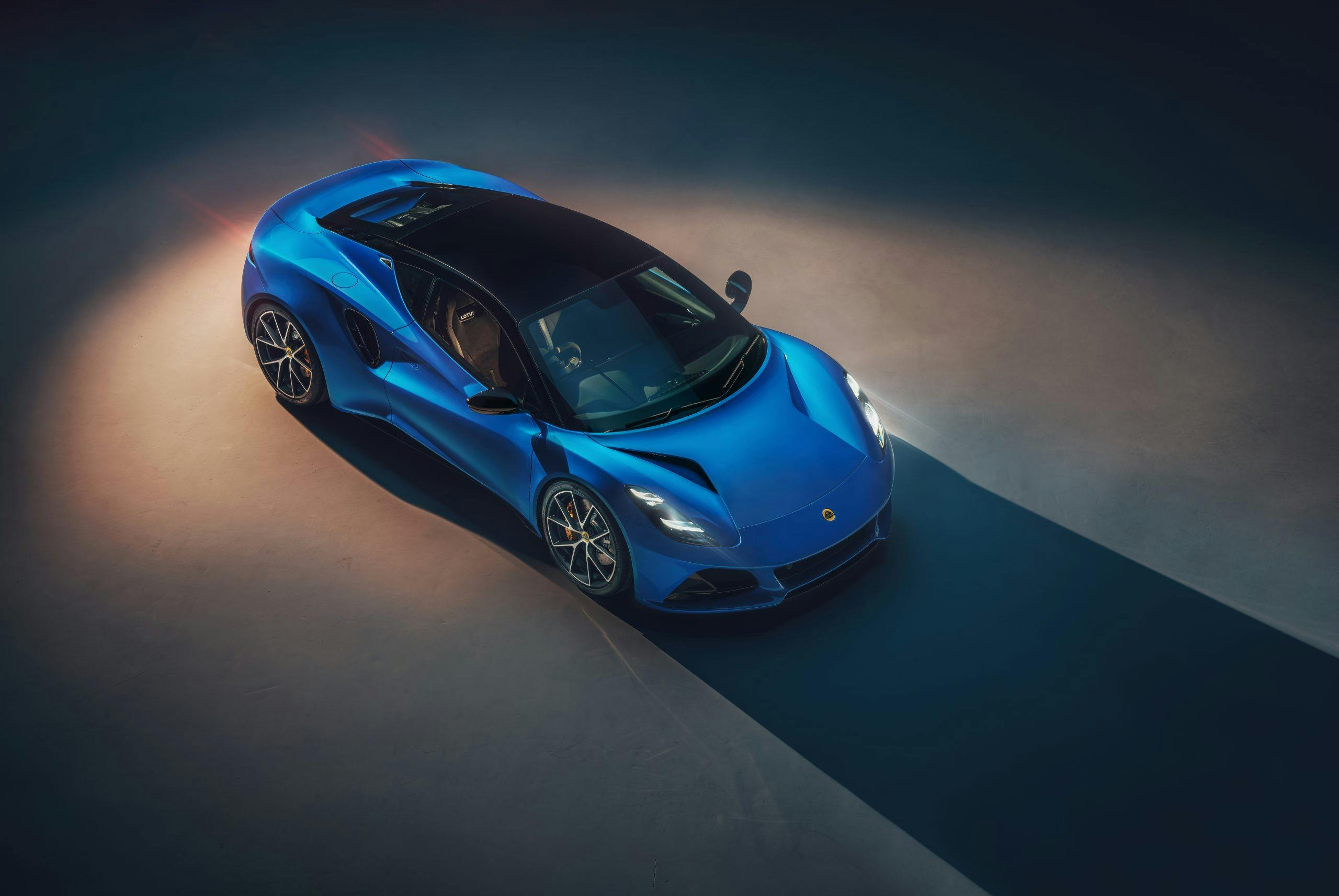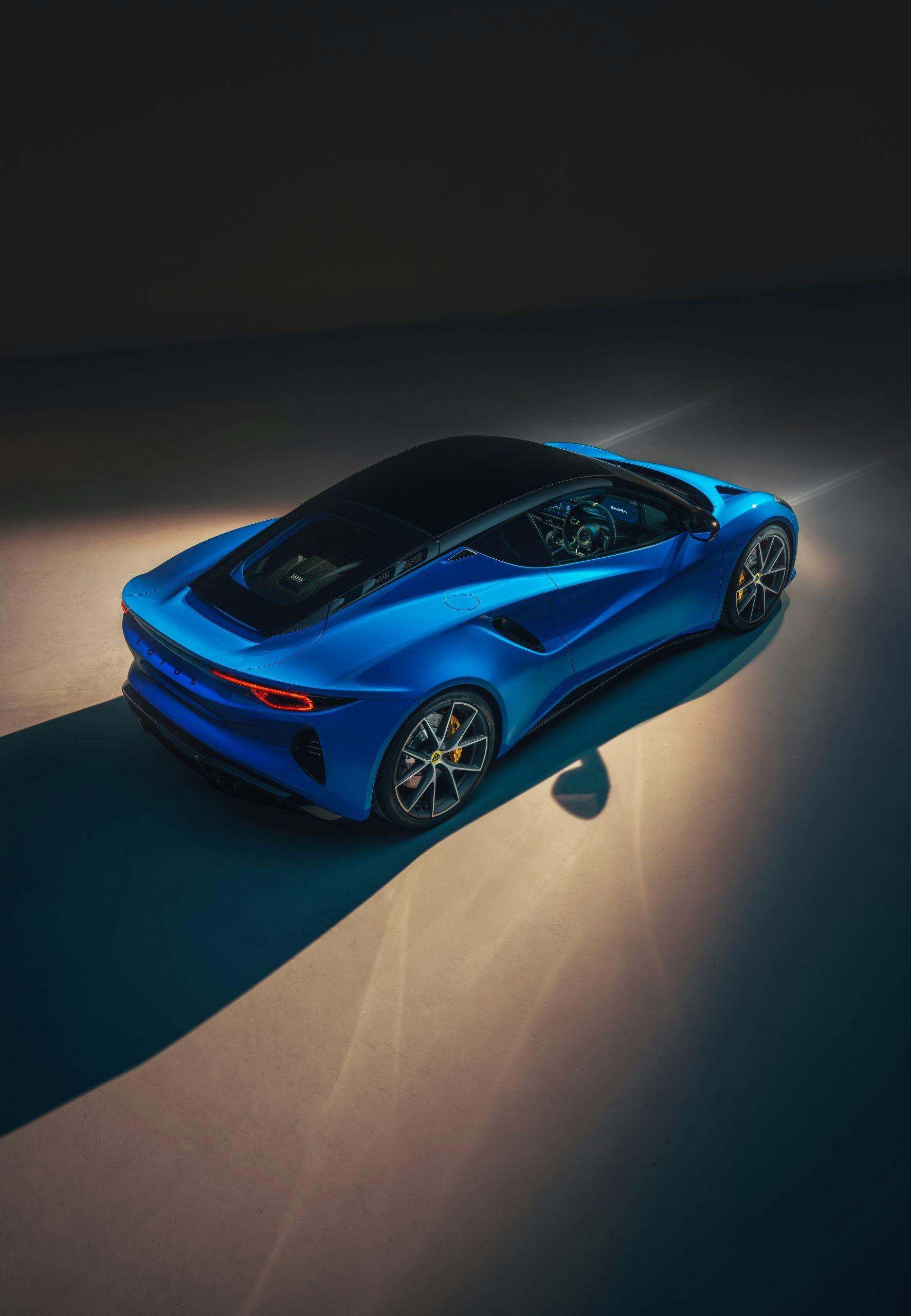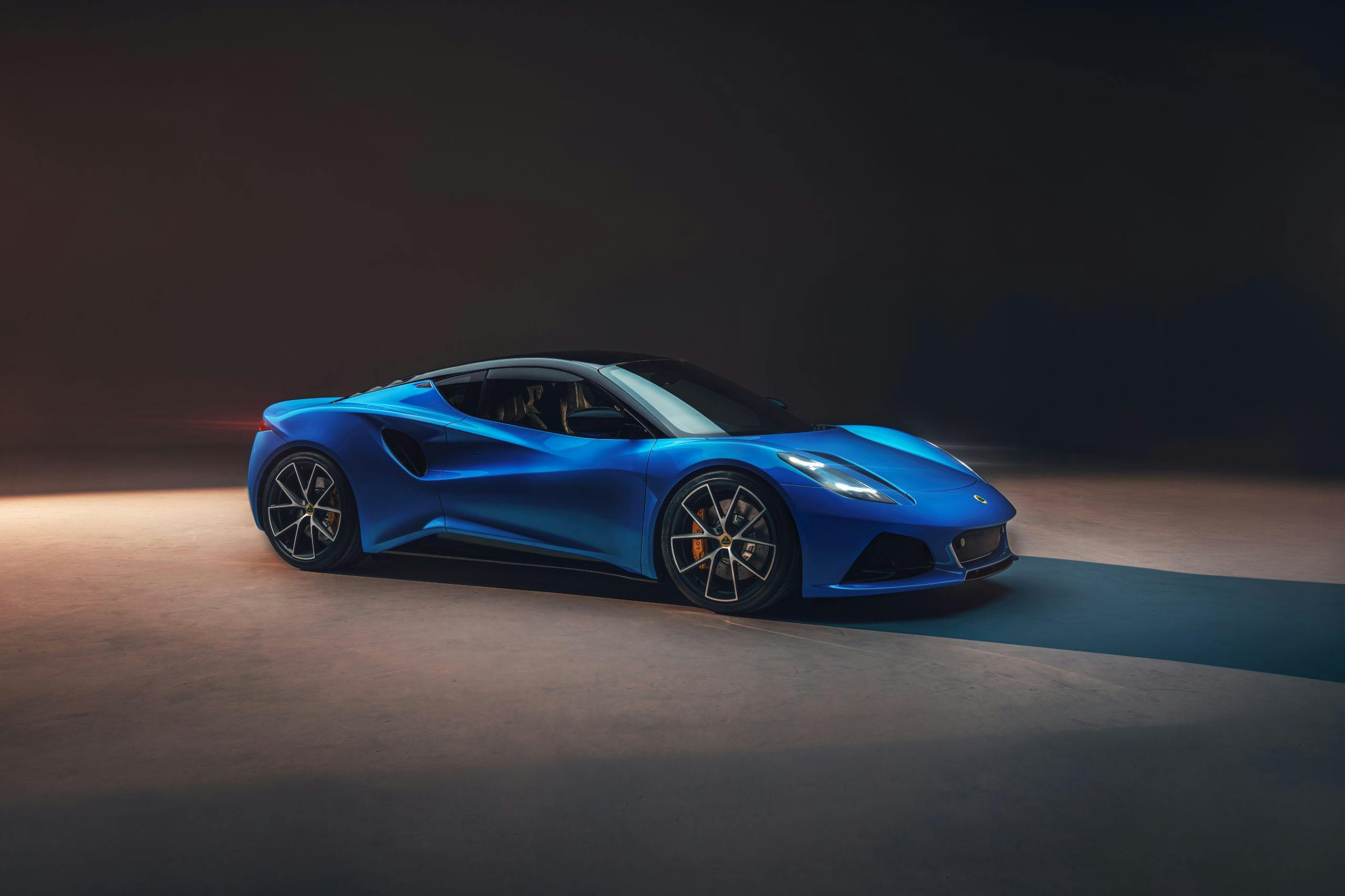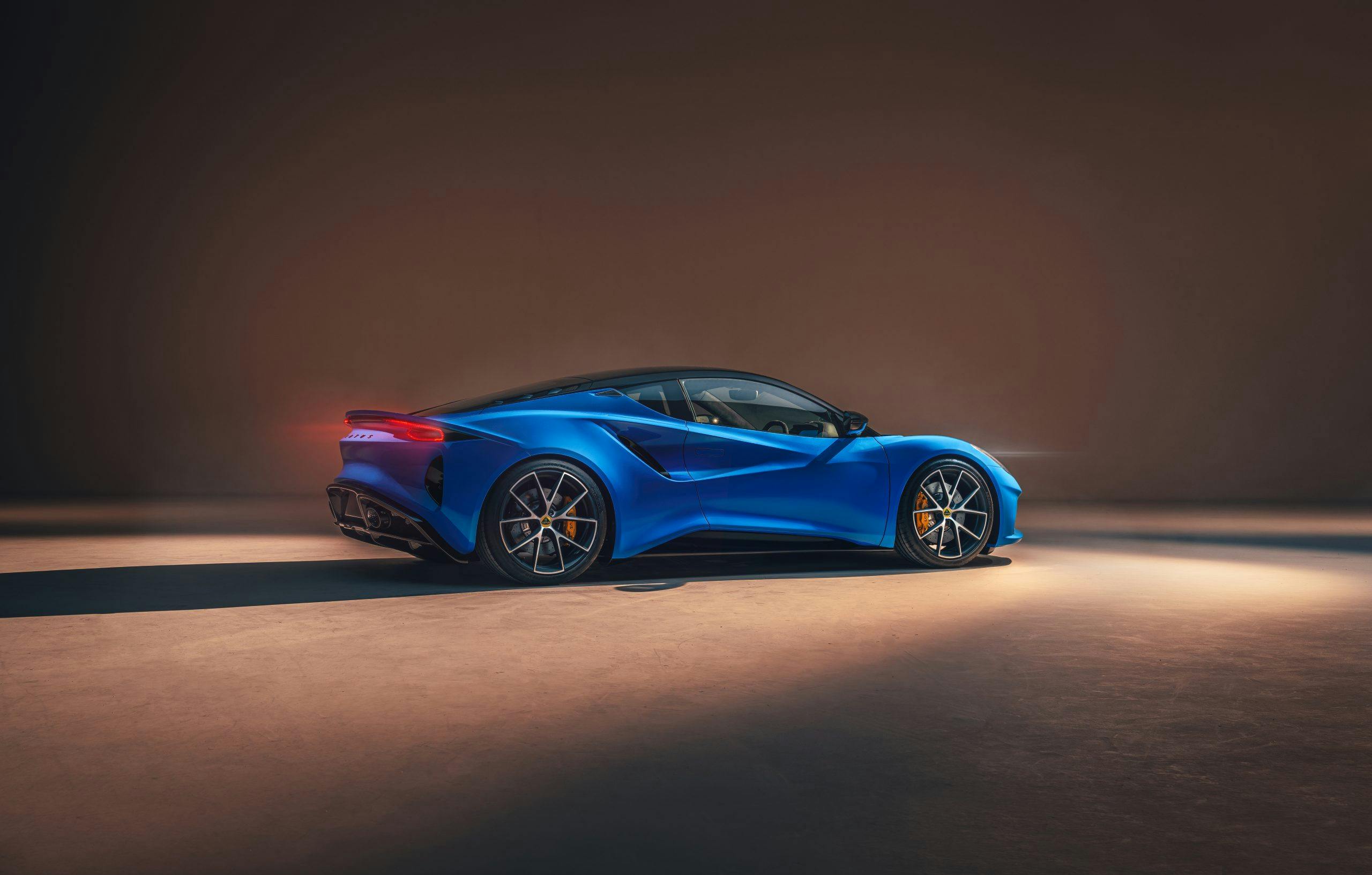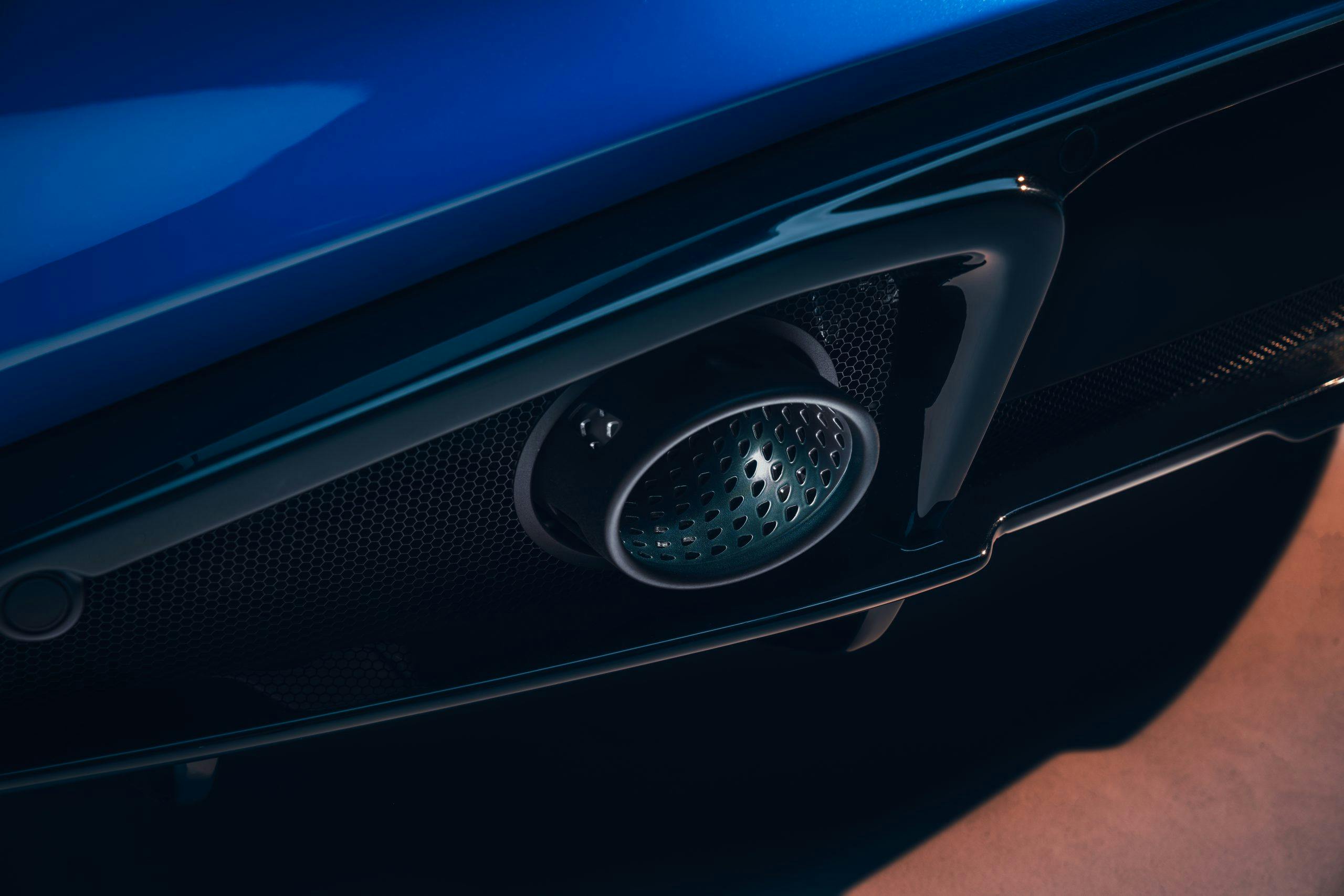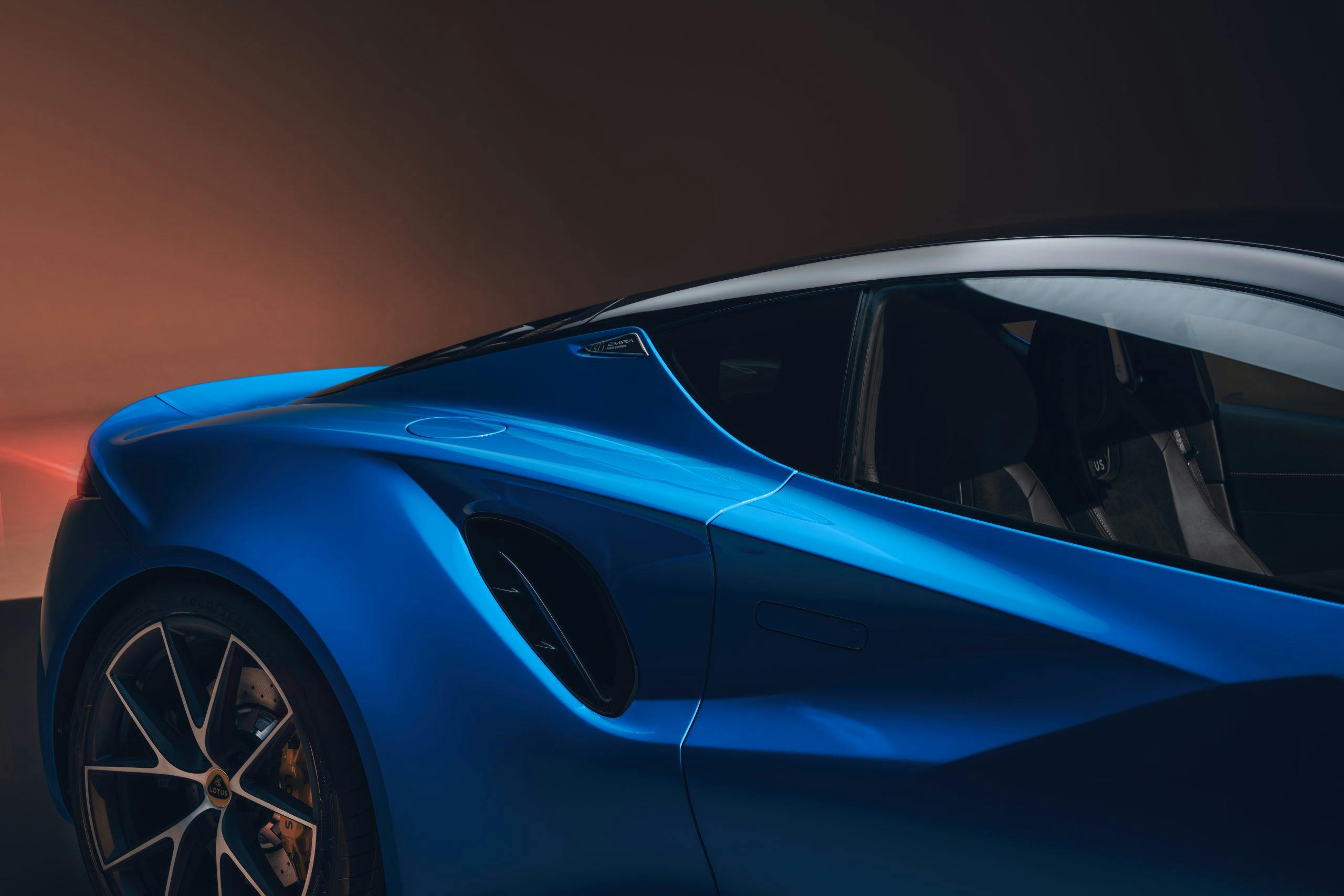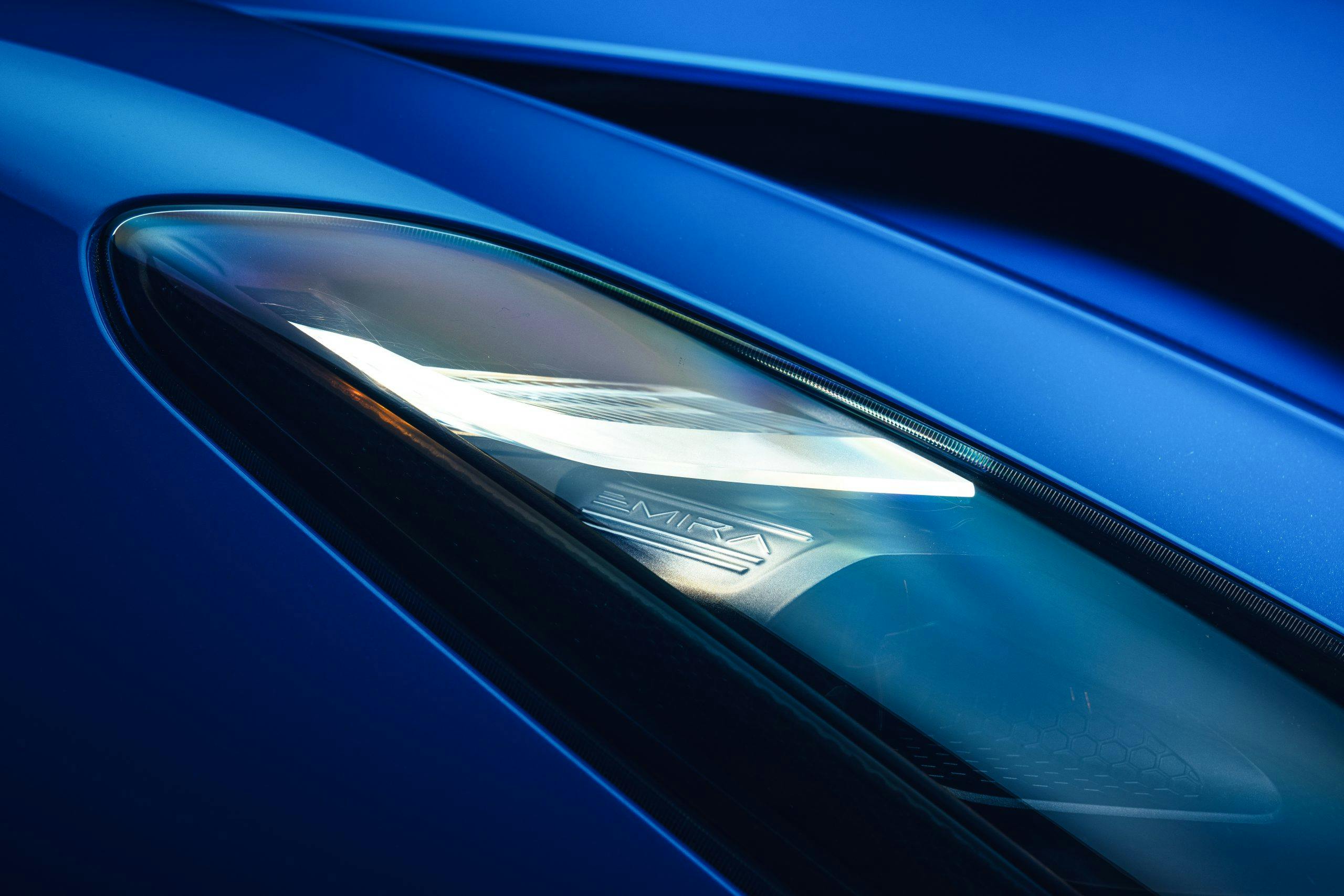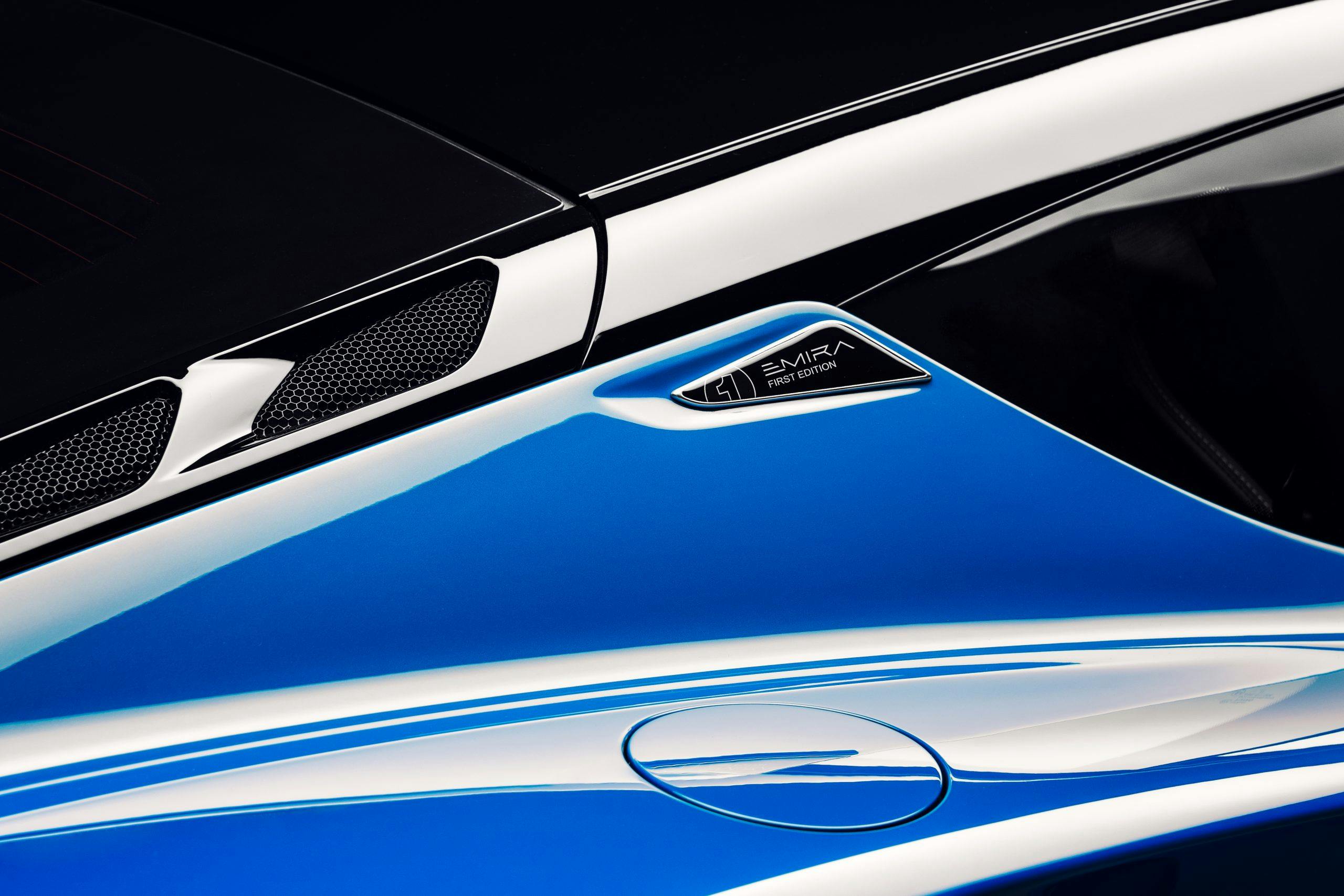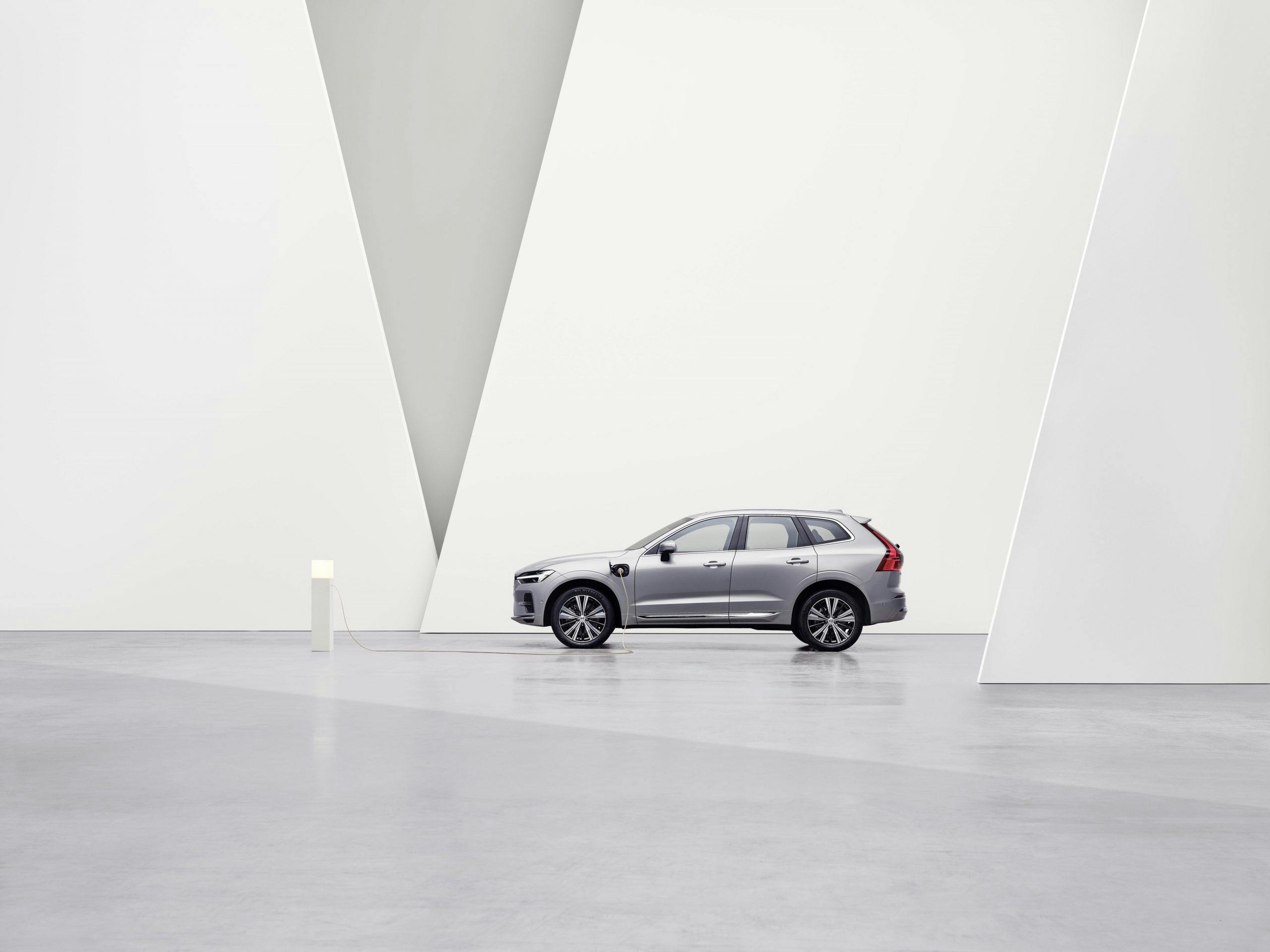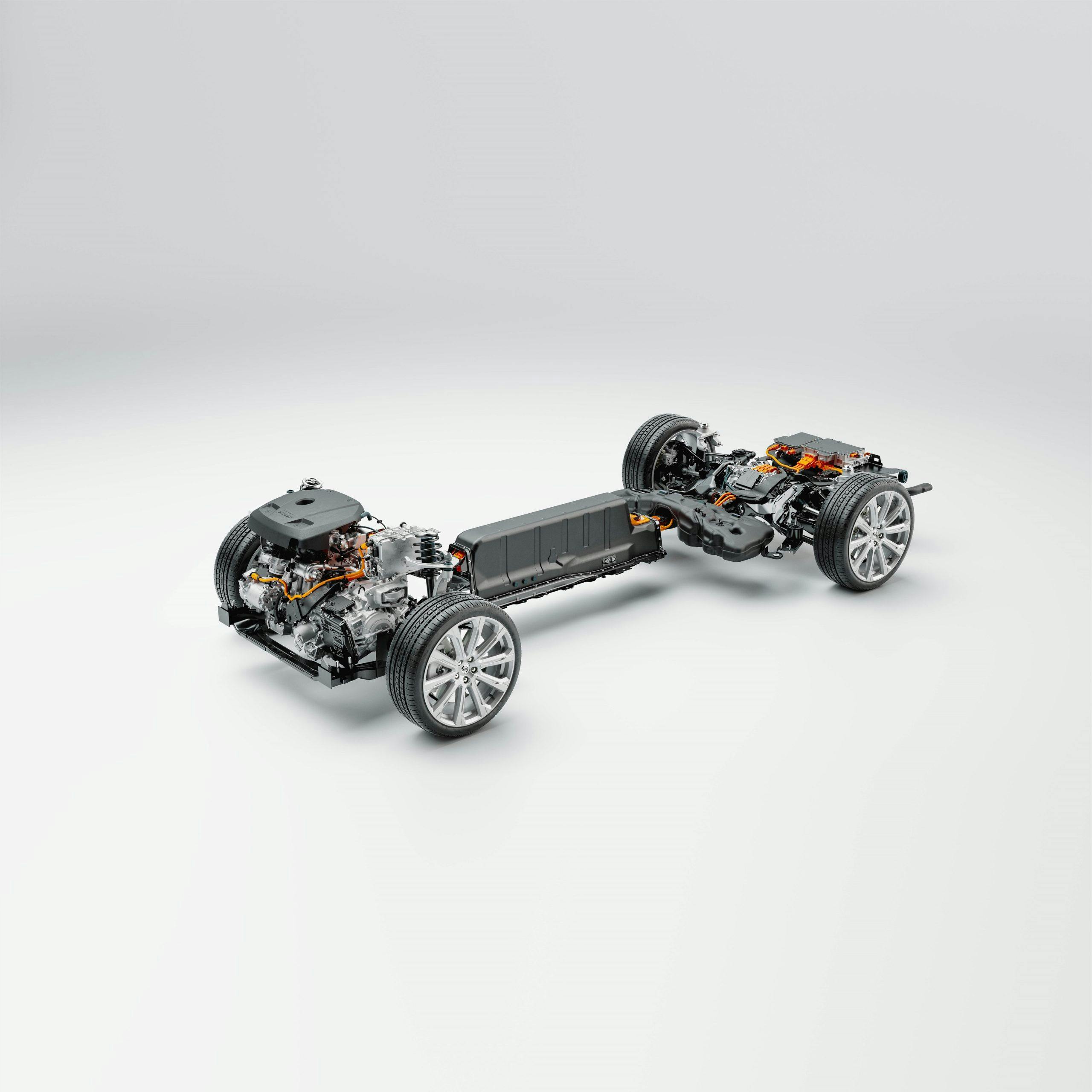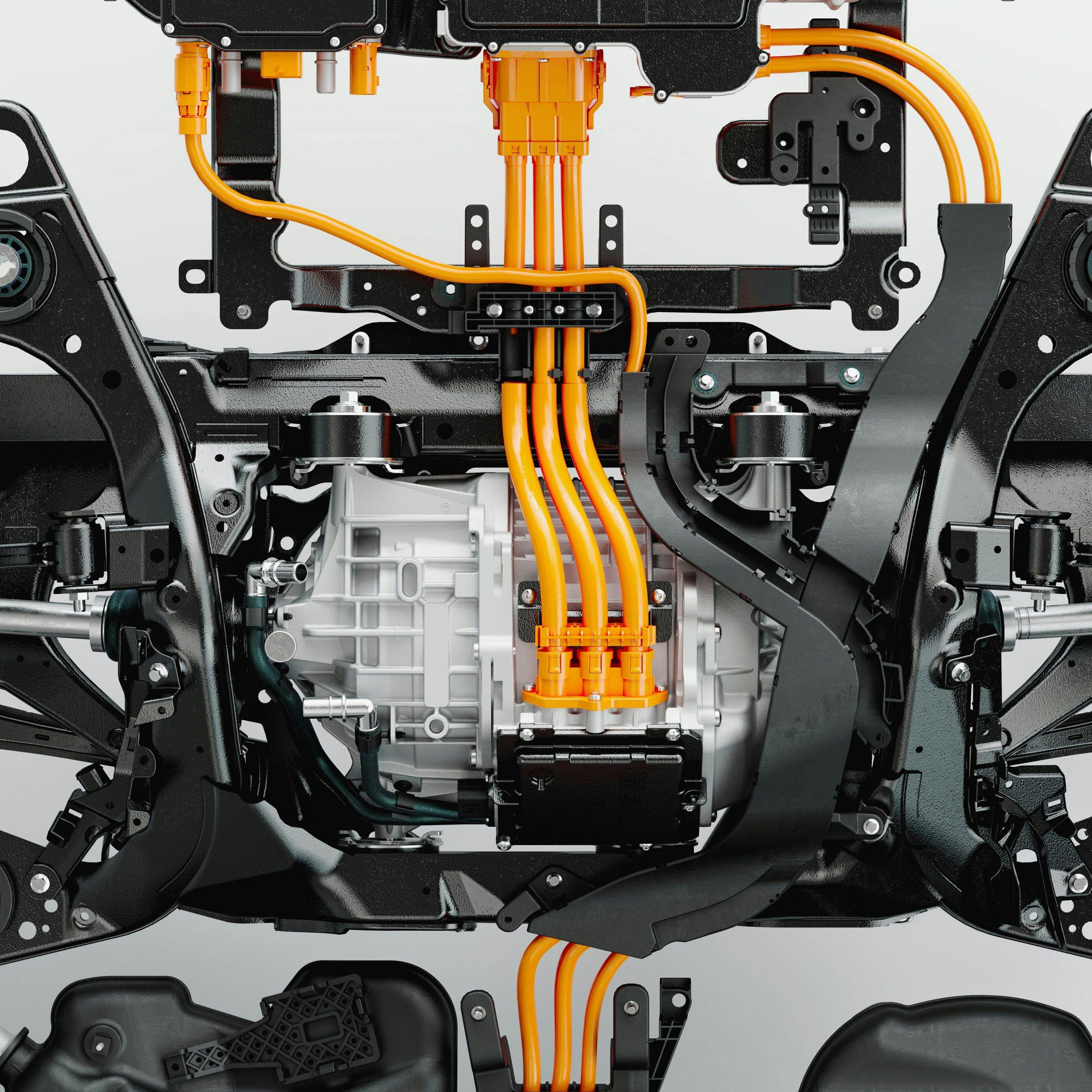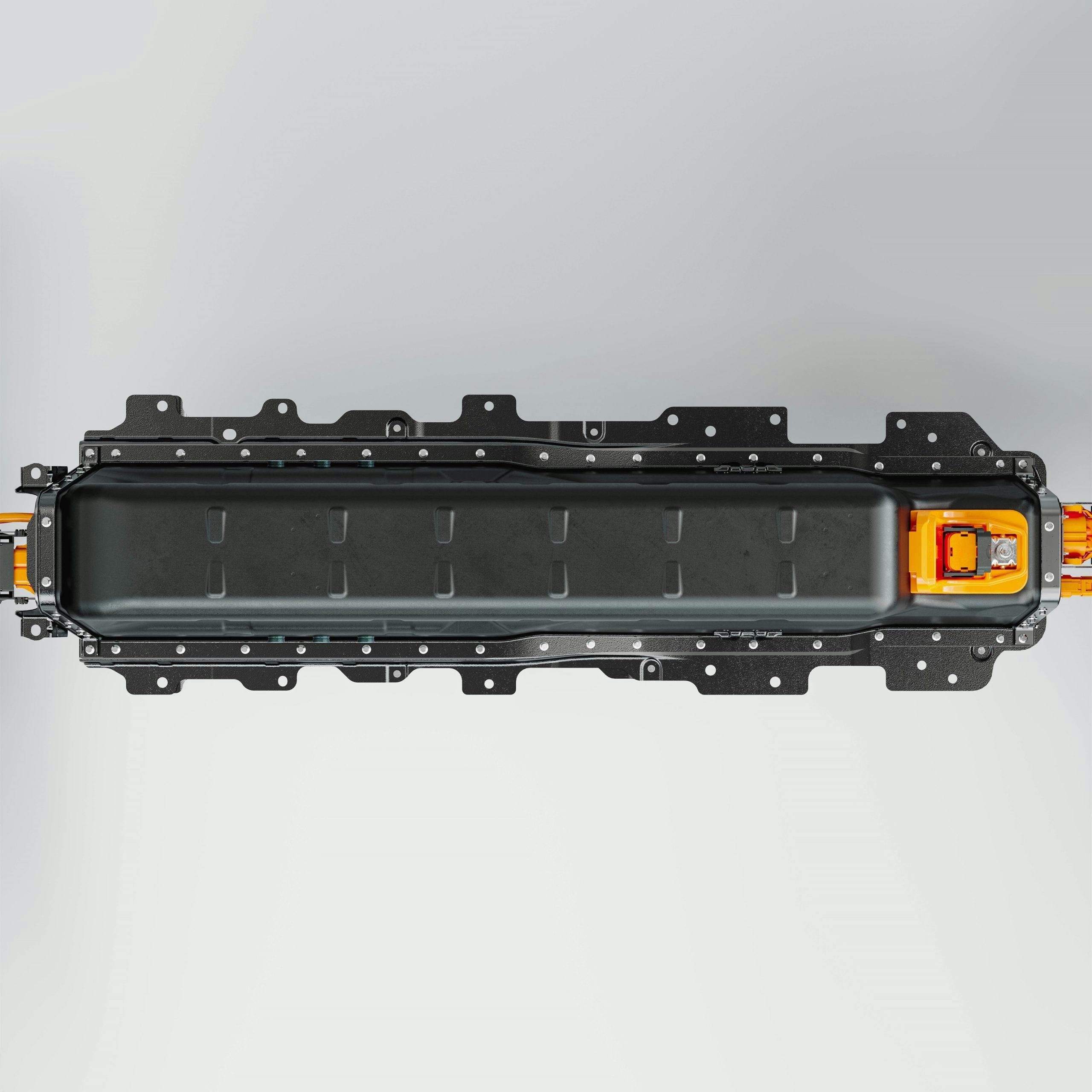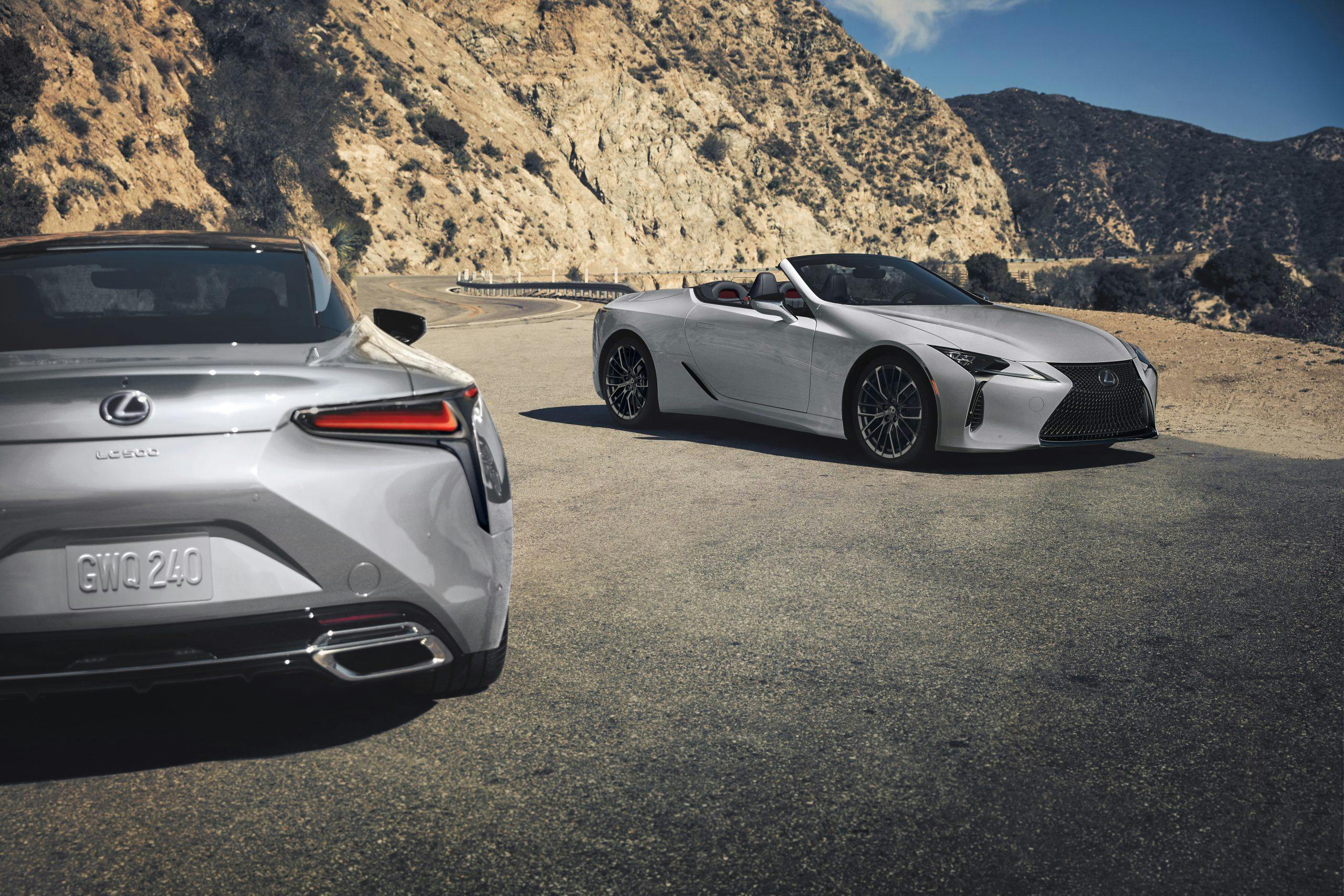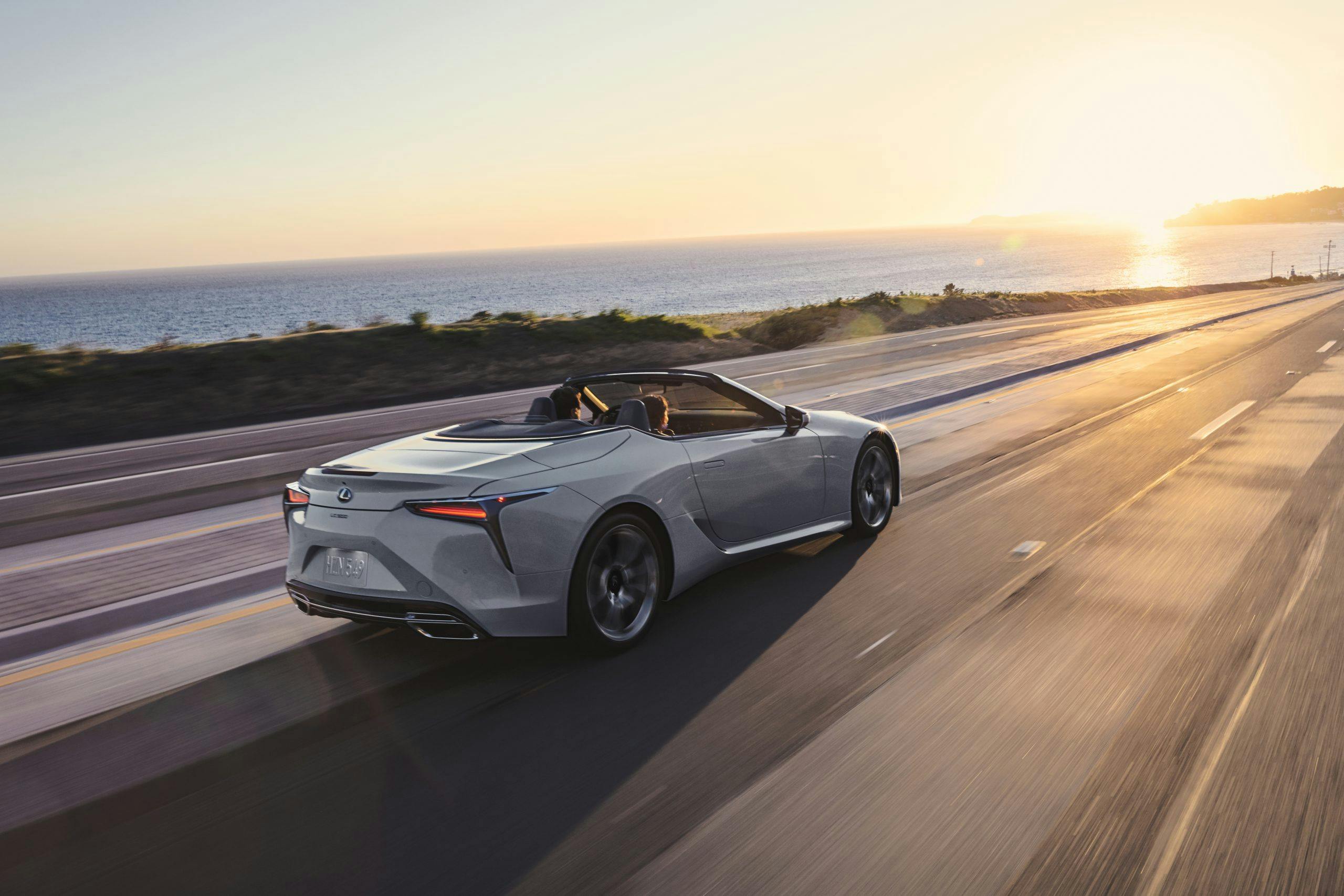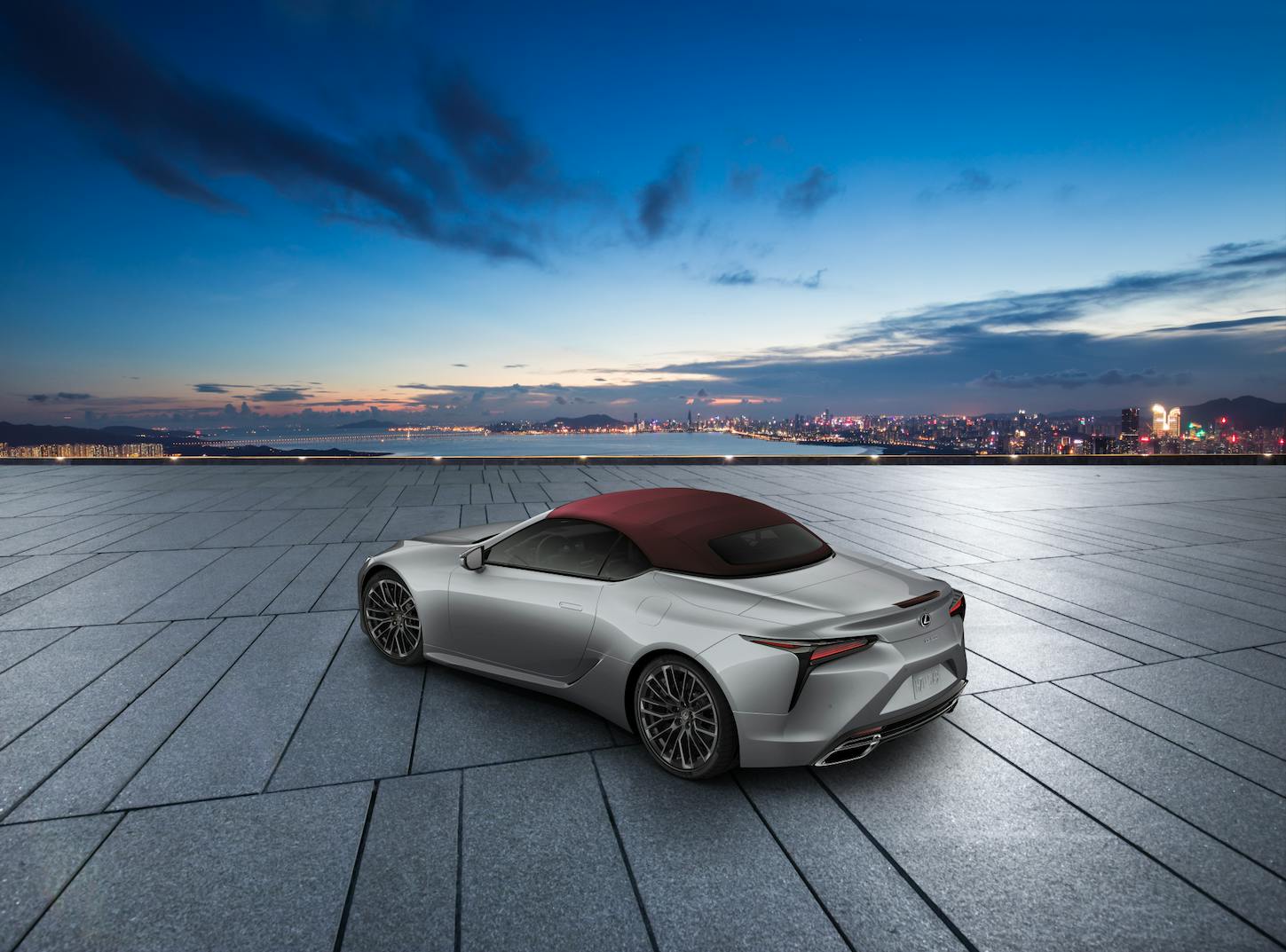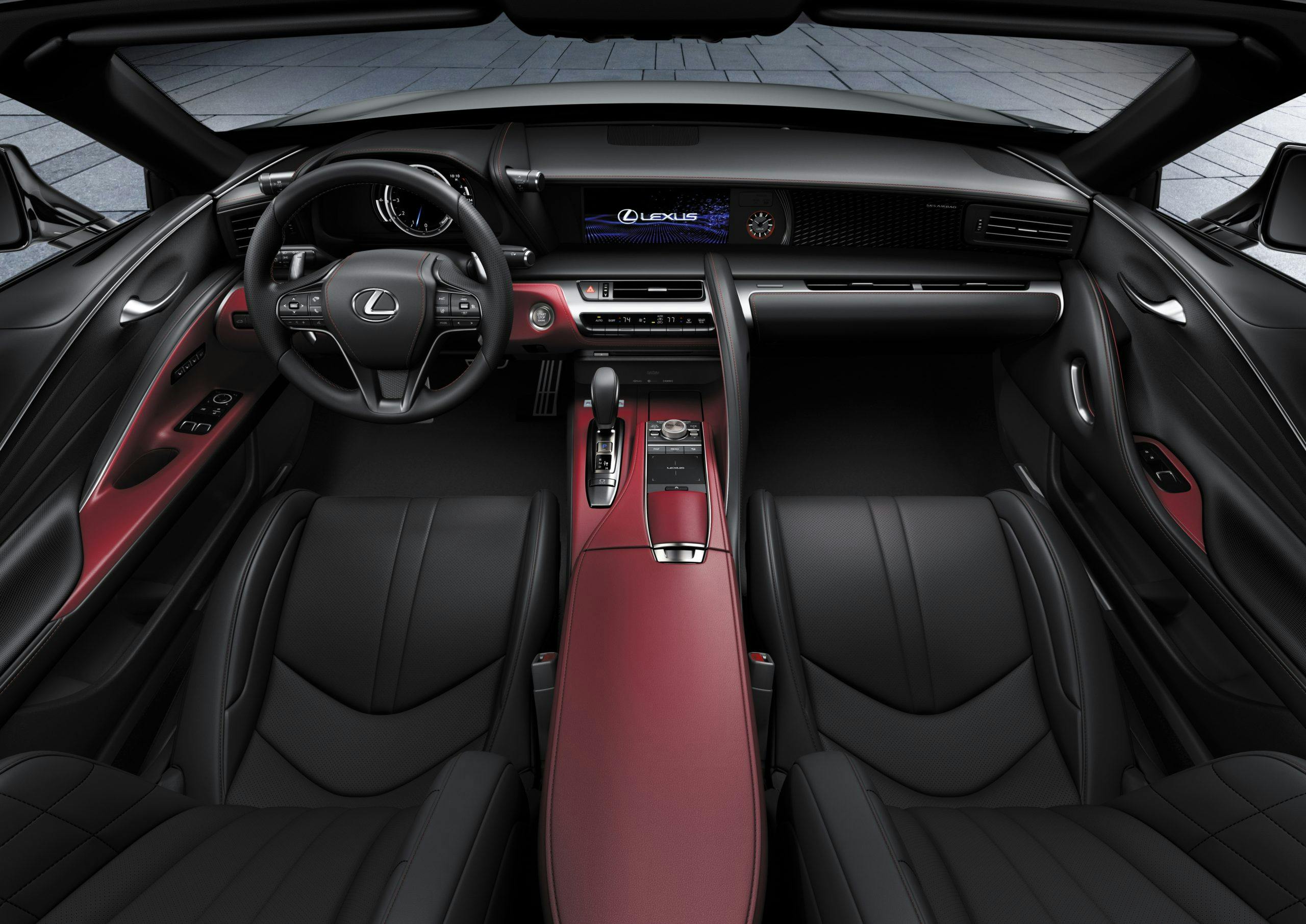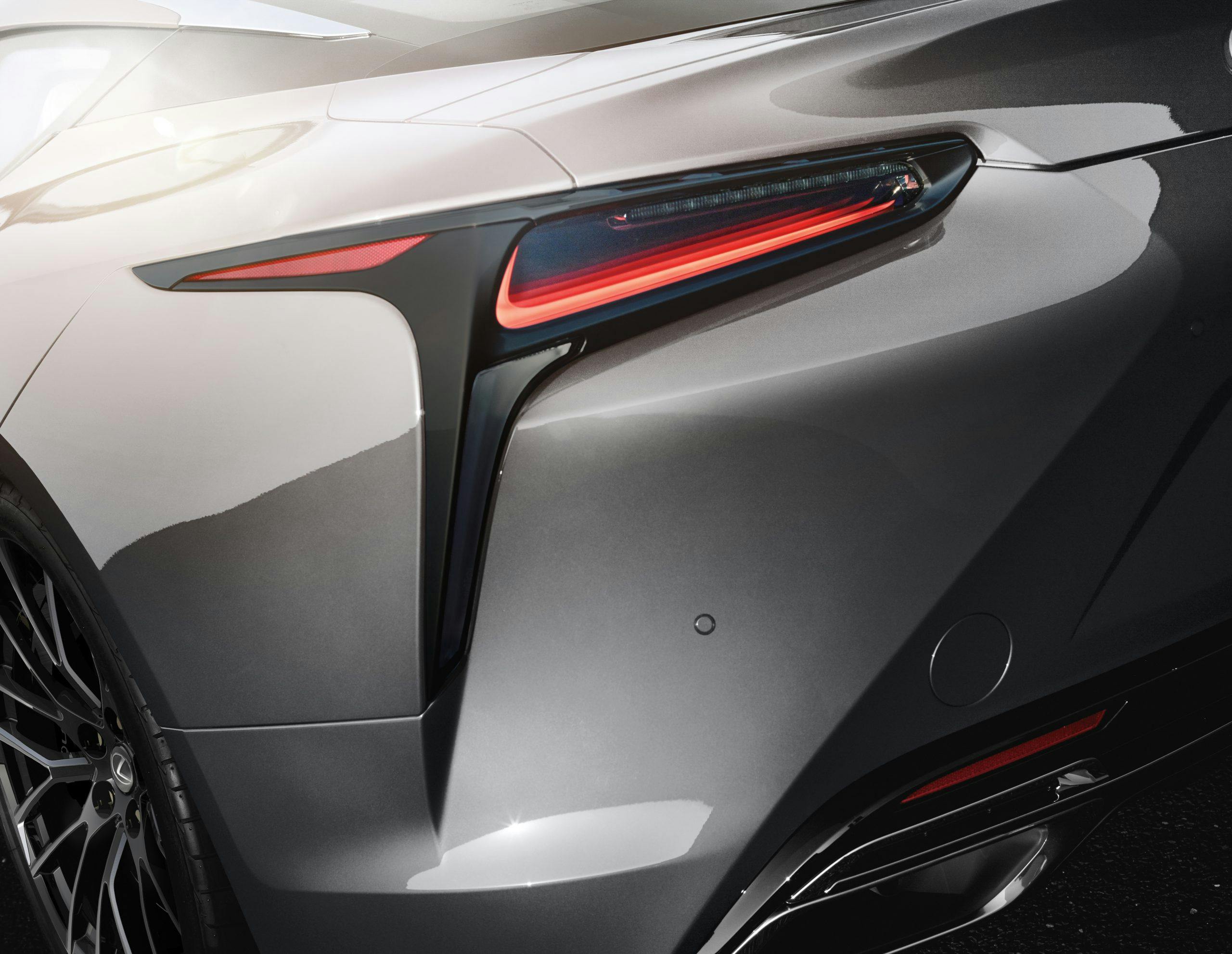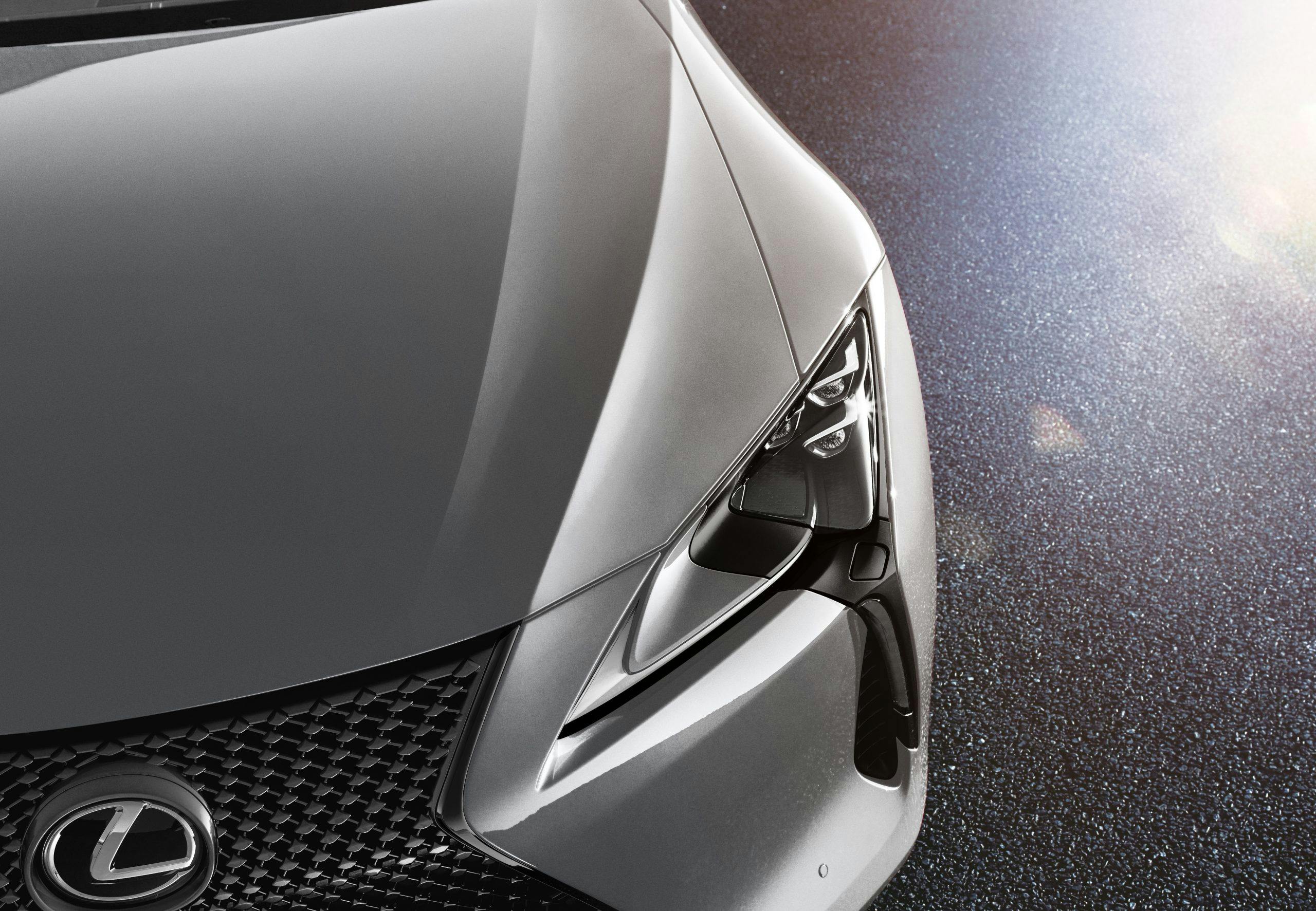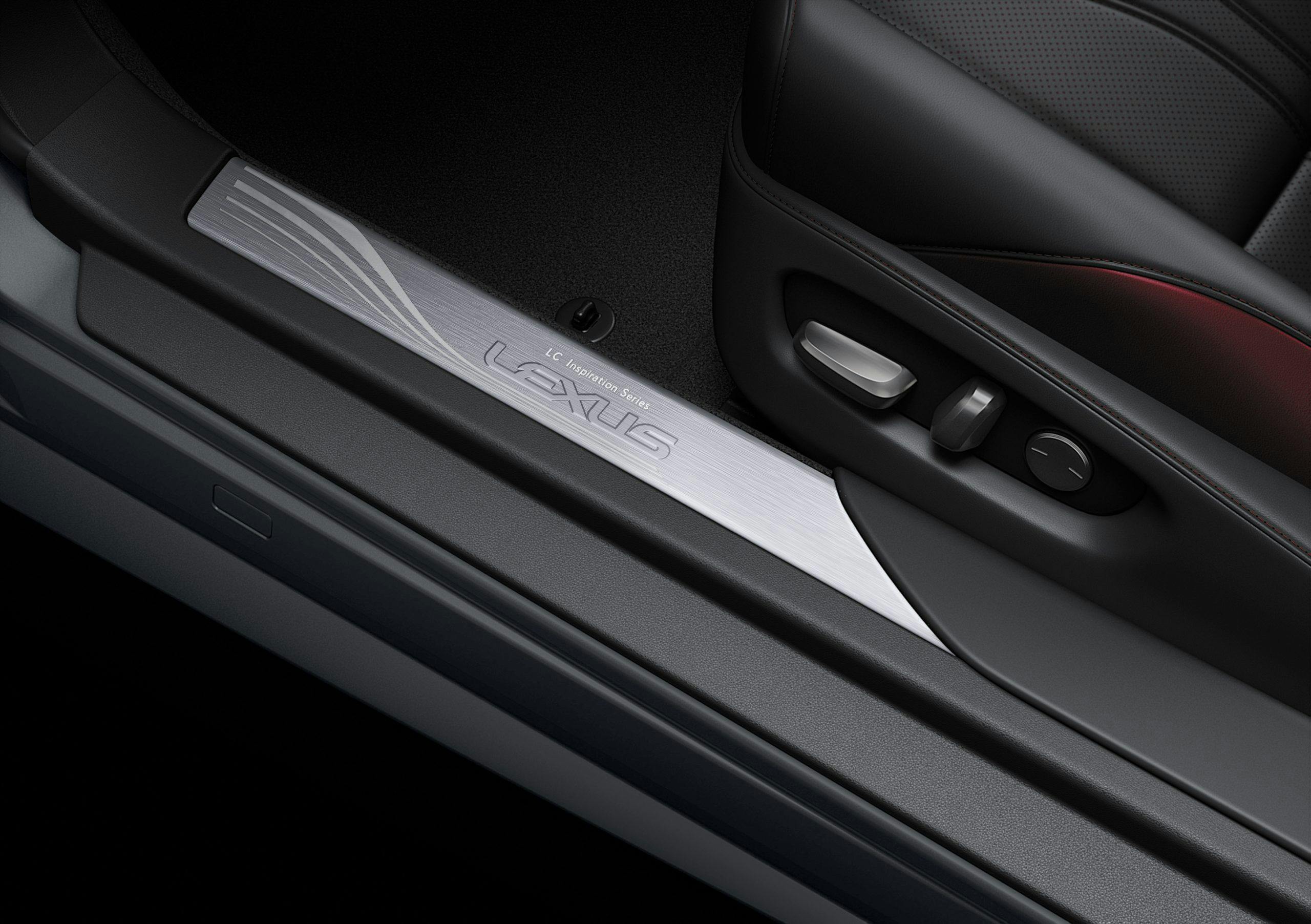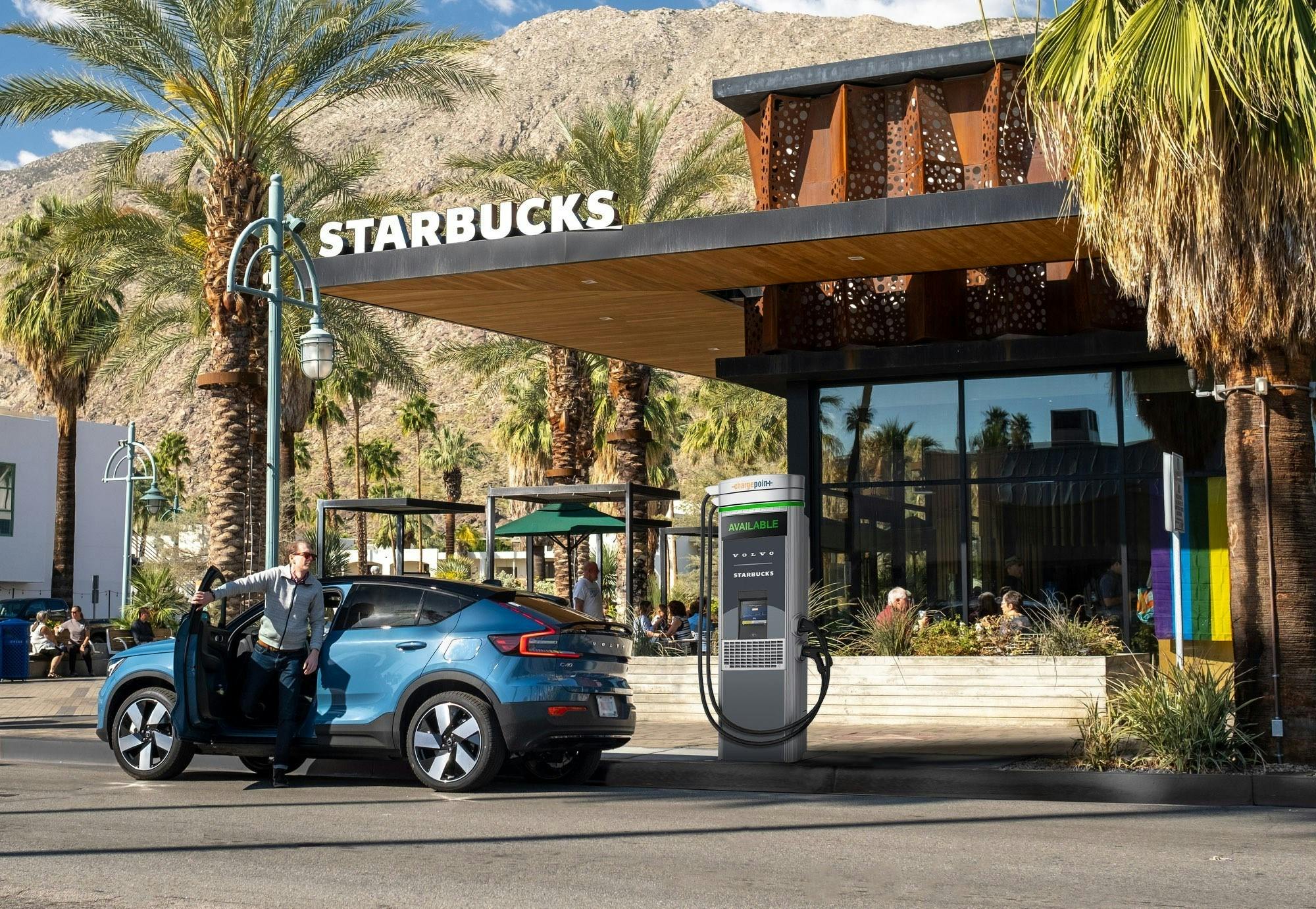Lotus Emira pricing and performance details, Volvo’s enhanced powertrain tech, Lexus’ limited-run LC 500
Lotus reveals four-cylinder performance, pricing for the Emira
Intake: Lotus has released pricing and powertrain details for the four-cylinder version of the Emira, the Hethel-based firm’s swan song internal combustion sports car. As expected, the engine of choice is the AMG M139 turbo-four from Mercedes-AMG. The M139 currently holds the title of most powerful four-cylinder in the world, making a whopping 416 hp (208 hp/liter of displacement) in top tune. Here in the Emira, with its Lotus-specific exhaust and a few other changes to account for its midship-positioning, the engine will make 355 horsepower. Gear shifting duties will be handled by an eight-speed dual-clutch automatic that’s also built by AMG but tuned by Lotus. No manual is available for the four-banger, whereas supercharged Toyota V-6-powered Emiras offer a six-speed stick. First Edition Emiras will get a host of niceties as standard, including the Drivers Pack, which presents the choice of tour- or sport-tuned suspension as well as varying intensities of tire; a Design Pack, which tacks on sport pedals, privacy glass, and an Alcantara headliner; and the Convenience Pack, which scores front parking sensors, a back-up camera, rain-sensing wipers, and a rear luggage storage net. What will this much goodness run you? Lotus says the four-cylinder Emira First Edition will cost $85,900 before destination, compared to $93,900 for the V-6, and the configurator is now live for your building pleasure.
Exhaust: No, $86K is not chump change, but consider the context and what you’re buying: The final mid-engine gasoline sports car from a brand known for expert handling. Like the Evora and Elise before it, this mid-engined sports car will almost certainly delight when pressed on a twisty road. What’s more, if the First Edition is a bit rich for your blood, Lotus says the base four-pot Emira will begin at roughly $78,500, which puts it roughly at price parity with the Porsche Cayman S. Ahead of the introduction of Lotus’ first all-electric vehicle—dubbed the Type 132, set to debut on March 29—the Emira looks to send ICE Lotus’ off with a bang. We can’t wait to drive one.
Volvo rolls out range-tripling battery update to 60 and 90 series
Intake: Volvo announced an updated version of its Recharge-brand plug-in hybrid powertrain today for 90 and 60 Series models. Thanks to an additional, third layer of cells in a larger battery pack (which grows in capacity from 11.6 kWh to 18.8 kWh) the all-electric driving range improves to an EPA-estimated 35–41 miles on a full charge, depending on the vehicle. Previously, you’d get anywhere from 18–22 miles of range. An improved electric motor delivers 65 percent more power to the rear wheels, bolstering all-wheel-drive capability. One-pedal driving, a function enjoyed by many pure EV owners (Volvo models included), is now also available on the XC60 and S90 Recharge models. It’s likely that this feature will expand to the other Recharge models shortly thereafter. What’s more, all Recharge T8 (the highest trim) models now qualify for the entirety of the $7500 federal tax credit for plug-in hybrid vehicles.
Exhaust: That tax credit can be a bit obscure, so know this: The plug-in Volvos previously qualified for part of that rebate, which delivers $2500 to all qualified plug-in hybrid owners plus $417 for those with a battery larger than 5 kWh, plus an additional $417 for every kWh over that 5 kWh minimum. Volvo’s move to up the pure-electric range will help its owners in very dense urban areas, some of which are now enacting Ultra Low Emission zones that mandate EV propulsion exclusively. Volvo is also betting that the appeal of one-pedal driving may help convert skeptics on the possibility of a pure EV down the road. “For many customers, a plug-in hybrid is their first experience in driving electric,” said Anders Gustafsson, president and CEO of Volvo Car USA. “This upgrade will show so many the benefits of an electric future, and serve as a stepping stone on their own journey toward full electrification.” For a company that’s pledged to be entirely electric by 2030, the Recharge drivetrain’s first impression will be key.
2022 Lexus LC 500 Inspiration Series brings exclusive finishes to 150 lucky buyers
Intake: Lexus’ 2022 Lexus LC 500 Inspiration Series takes the already stunning LC 500 and adds another layer of luxury and sophistication. The latest iteration pairs an Iridium exterior with a Black and Dark Rose interior. Opt for the convertible, and the fabric top will come in matching Dark Rose. The interior of both models will include a stainless-steel scuff plate, serialized center console badge, and a Mark Levinson 13-speaker 915-watt audio system. The coupe will receive unique seats tailored for long-distance comfort, while the convertible will use sport seats with upper body heating to keep things comfortable with the top dropped. Both models will set themselves apart from other LC 500s with unique 21-inch 3D-machined wheels. Only 150 units of this year’s LC 500 Inspiration Series will be available, but that’s 50 more than 2021’s version, which paid tribute to Yoshihide Muroya, the 2017 Champion of the Red Bull Air Race world championship. They’ll start arriving in dealerships beginning in late spring 2022.
Exhaust: The 2021 LC500 Inspiration Series was a stunner with its functional yet tasteful bespoke wing. This year’s Inspiration Series is a bit more subdued, although the Dark Rose top on the convertible does make for a rather bold statement. The 50% increase in production still results in quite a limited number, so we wouldn’t be surprised if these become collector favorites down the line.
Volvo and Starbucks team up to build an EV and latte lover’s pipeline
Intake: Akin to John Stockton and Karl Malone, EV chargers and fancy caffeinated beverages go hand in hand—to have one is good, to have both is better. At least, that’s how Volvo and Starbucks see the future playing out along America’s national thoroughfares. The duo is set to bring as many as 60 Volvo-branded (ChargePoint produced) DC fast chargers to Starbucks locations found on the roughly 1350 miles of interstate highway between the coffee cartel’s headquarters in Seattle and the mountain-adjacent metropolis of Denver. That stretch currently contains some 15 Starbucks locations, which means drivers can expect a charging station every 100 miles or so—well inside the range of most modern EVs. Charging times will vary, but on average, DC fast chargers take about 40 minutes to go from 20 to 90 percent capacity on a BEV CUV like Volvo’s C40 Recharge model, encouraging folks to stop in for a caramel macchiato and a quick scroll on their smartphone. By 2022, installations should be complete and accessible for all EVs, though any non-Volvo EVs will have to pay a charging fee.
Exhaust: In a world where on sipping overpriced coffee while waiting for EVs to charge will inevitably become a norm, Volvo and Starbucks are just getting ahead of the game. No surprises there. Both companies set ambitious environmental initiatives: Volvo plans to be fully electric by 2030, and Starbucks is working to lead the retail sector in carbon footprint reduction. Expect this sort of charge-and-chomp partnership trend to continue as many food and beverage companies look to incentivize occupation of their parking lots—and by extension, their stores.
Ford warns dealers that lots will get even emptier soon

Intake: With supply chains in unprecedented states of tumult, the bad news keeps coming for the retail side of the auto industry. During a meeting at the National Auto Dealer’s Association (NADA) conference in Las Vegas, Ford told dealers that it has lost nearly 100,000 units of production due to unfulfilled parts orders from 37 suppliers, according to a new report from Automotive News. That means dealer lots, already scant on new offerings, will get even sparser before long, with Ford warning attendees that it will push allocations on most vehicles back to sometime in May. Ford noted that a backlog of orders from earlier in the year will continue to cut into future production as the Blue Oval races to make up for lost time. In February, some 33 percent of Ford’s retail sales were snatched up to fulfill previous customer orders, according to AN.
Exhaust: Compared to auto manufacturers with less of a footprint in business and large fleet sales, the supply chain crunch is a bigger problem for Ford’s utility-intensive portfolio. Honda Accord owners may have to wait a few fiscal quarters before upgrading to a new model, but small and large businesses alike rely on fleet vehicles to bring home the bacon—and they want their orders fulfilled yesterday. With automakers and analysts alike forecasting these parts crunches to extend through the year and possibly into 2023, the future is quite uncertain. It’s causing mega-dealers such as CarMax to put obscene prices on older products like 11-year-old Ford Rangers, which are commanding more money now than they did brand new. Welcome to the Brave New World of the automotive retail, it’s not getting any better anytime soon.

